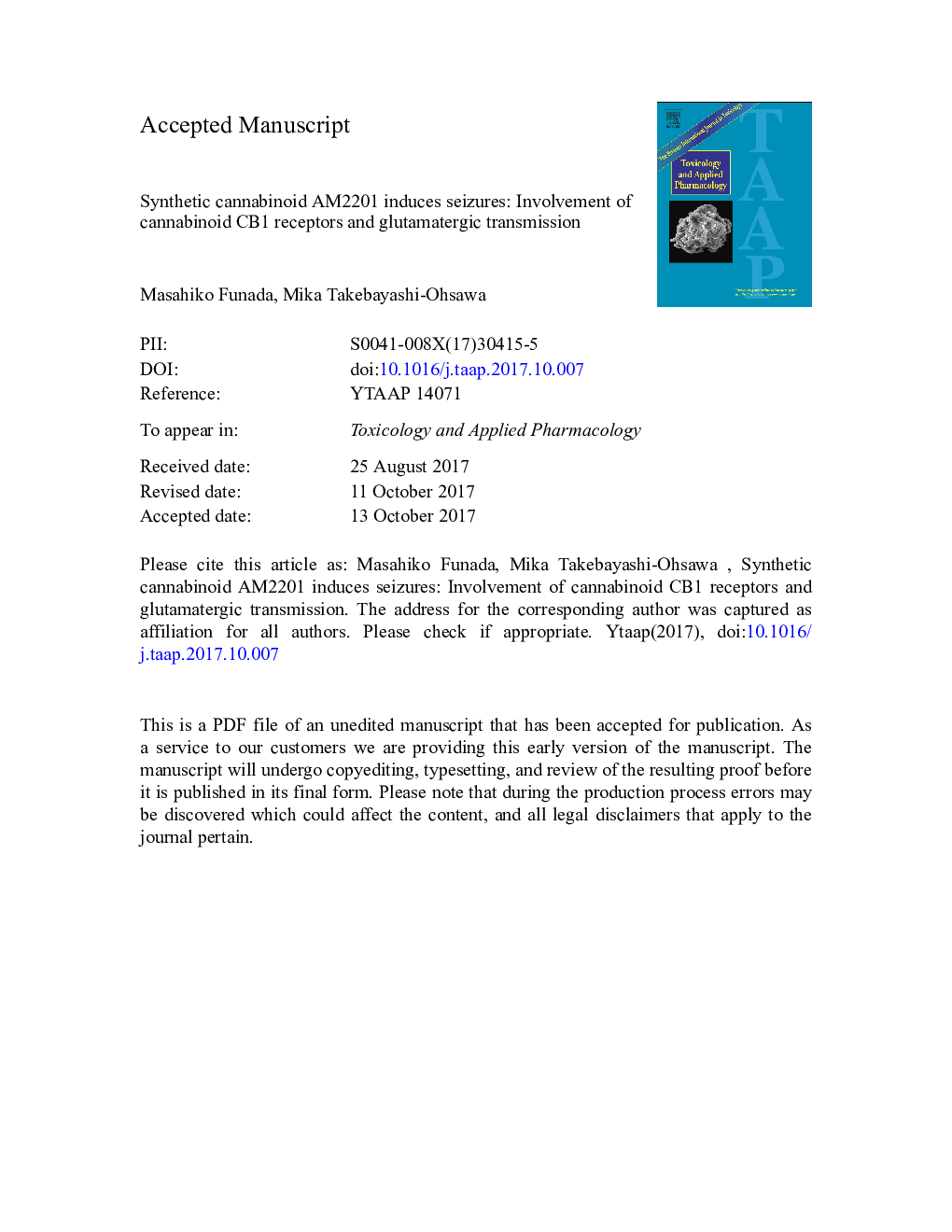| Article ID | Journal | Published Year | Pages | File Type |
|---|---|---|---|---|
| 8538955 | Toxicology and Applied Pharmacology | 2018 | 45 Pages |
Abstract
Abuse of synthetic cannabinoids is a serious social problem worldwide. Intentional ingestion of synthetic cannabinoids can cause severe toxicity, including seizures. Here we investigated the effects of acute administration of synthetic cannabinoids on the induction of epileptic seizures by monitoring electroencephalographic activity in freely moving mice. The synthetic cannabinoid, AM2201, induced abnormal, high-amplitude (>Â 2-fold baseline amplitude), sharp-wave activity. The abnormal spike-wave discharges were accompanied by epileptiform behavior: rigid posture, tail extension, rearing with forepaws extended, jumping, and intermittent tonic-clonic jerking movements. The abnormal spike-wave discharges and behavioral changes were suppressed by pretreatment with the selective CB1 receptor antagonist AM251, but not with the selective CB2 receptor antagonist AM630 or the vanilloid receptor antagonist, capsazepine. Furthermore, the group 1 metabotropic glutamate receptor antagonist SIB1757 eliminated AM2201-induced spike-wave discharges and episodes of epileptiform behavior. AM2201 markedly increased the extracellular glutamate concentration in the hippocampus during periods of AM2201-induced abnormal spike-wave discharges and behavioral changes. These findings are the first evidence that AM2201 induces epileptic seizures by enhancing glutamatergic transmission in the hippocampus. Our findings demonstrate that induction of epileptic seizures by synthetic cannabinoids is mediated by CB1 receptors, but not by CB2 receptors, and further suggest that rapid elevation of glutamatergic transmission may play an important role in the induction of seizures following intentional ingestion of synthetic cannabinoids.
Related Topics
Life Sciences
Environmental Science
Health, Toxicology and Mutagenesis
Authors
Masahiko Funada, Mika Takebayashi-Ohsawa,
